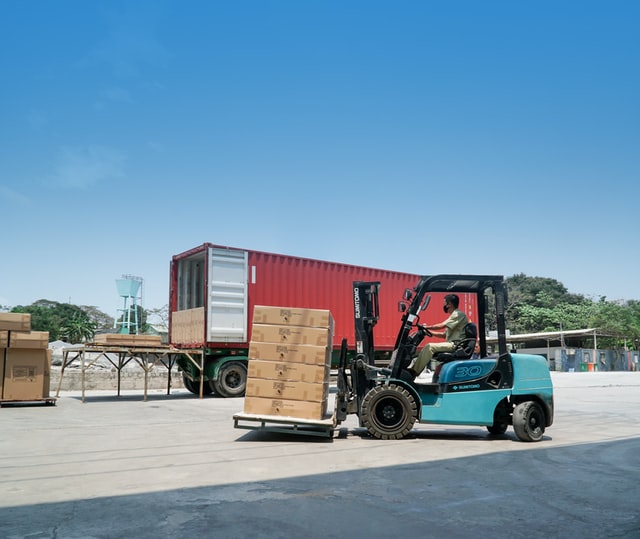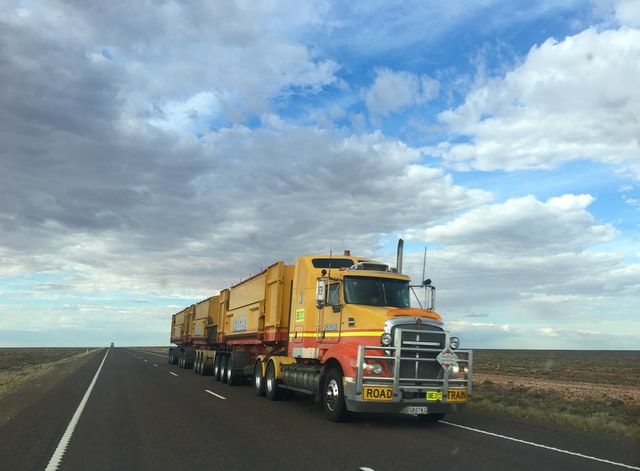A look at the Transport Industry

Contributing heavily to the Australian economy, in 2002 there were “around 47000 businesses operating in road freight transport” (National Transport Commission Australia, 2016, p. 25). A report from Infrastructure Australia (2019) shows that domestic freight grew by 50% in contrast to an 18% growth in population in the 10 years to 2016. It’s an industry that is governed by many rules, regulations and lots of administrative redundancy. Every gram of weight needs to be accounted for along its journey around the country – often covered by lots of paper.
A paper-based system presents within itself several problems. It is inefficient and labour intensive – forms, orders and consignment notes (connote) need to be copied, sent and archived. Repeated data entry introduces the opportunity for copy errors – such as a dollar or weight value changing from one copy to the next. With increasing quantities of freight and information on the move, if the data is bad, money can be easily lost. For example, if the handwriting is poor the information can be misinterpreted by the external party or by a client – causing a range of problems. For G Bishops Transport, the connote is “the first point of contact for many systems” (Prashant, Financial Controller). The process is established by the connote – when a mistake is made on the connote, everything that flows out from there suffers. If one connote is wrong or missing for a manifested truck, the entire truck needs to be audited and the information verified.


“Management saw ...
how much ‘easier it was to have everything computerised’” — Leonie
In 2013 G Bishops Transport were moving away from specialised freight to general freight. A truck went from being manifested with less than five connotes, up to around eighty. As throughput increases, so do the chances of errors. In the event of an error, finding the correct information becomes an exercise in finding a needle in a haystack. Every archived piece of paper needs to be pulled from storage and audited because there wasn’t a “computerised record of what actually happened as far as which trailer it went on, where it was from, and what was written on the connote” (Leonie). Consequently, the day slows down, and valuable time is lost as administrative hours are spent correcting an issue, delaying the dispatch.
Going digital with ConNote brings the ability to quickly search through the system – checking the archives in a centralised system – cross-referencing information about a particular connote for a given truck and driver. It allows the user to see who handled the freight when, improving the transparency and efficiency of information transfer.
For G Bishops Transport, going digital was an easy choice. Leonie recalls that the “decision making was just ‘hey guys, get with the times, move forward’”. A digitised workflow brings efficiencies to the manifesting process. G Bishops Transport were able to see the comparison by trialling ConNote with some of their fleet. For the trucks being handled through ConNote, ten consignment notes could to be completed and manifested to a trailer in two minutes while the other trucks were still sorting and writing out various paper documents. Management saw the benefits – how much “easier it was to have everything computerised”
“ConNote allows us to run our business” — Prashant
Quickly adopting to ConNote, G Bishops Transport got to work adapting ConNote to their specific needs. Working closely with Logical Developments saw the inclusion of “Pick Ups” – this feature enables users to schedule pickups and automatically send them to the drivers when they’re out and about, without having to call or text them – working neatly through ConNote and it’s mobile companion application.
The benefit of working with Logical Developments is in taking a given package and tailoring it to suit the business. Not tailoring the business to the package. Our software is designed to grow with the businesses that adopt our software. ConNote is a smaller freight package that focuses on the core aspects of transport – pared down to the essentials whereas “the bigger systems are too big for small companies” (Leonie), but has a range of extensions that can be added to meet the needs of a growing company.
We strive to create a great working relationship with our clients – taking the time to understand the issues that are needing to be addressed. Rooted in that understanding, Prashant reports that the experience for G Bishops Transport has been “Paul goes away and does something and comes back to us, and says ‘Hey this is a trial, a mock up, is this what you want? Yes, no?’ We refine and refine, and get to a working solution”. An ongoing experience, Paul (and Logical Developments) have been steadily incorporating requested features into ConNote.

Flowing out of this back and forth, G Bishops Transport requested the addition of the ‘Report Scheduler’ – which “is going to be a mainstay. It’s going be cutting down time for people pulling reports and going into the system and generating things – it’s going to be delivered directly to their email whenever they require it”. Features like these smooth out the processes involved in transport and logistics - “ConNote drives efficiency around analysis which comes through reporting” (Prashant).

Increased reporting capabilities and improved traceability creates the opportunity for more transparency in the flow of information through the business. This enables business decisions to be more informed – identifying areas for improvement or opportunities for growth. Prashant puts it simply, “ConNote allows us to run our business”.
The transport industry is filled with regulations that need to be met – with information that needs to be produced on request. Leonie reminds us of the significance of being able to produce the weight of the truck - “being able to produce that bit of paper without having to add up the weight of thirty connotes, it makes it so much quicker and easier and it’s not too complex”. Seemingly trivial, any ability to save time and labour enabling an increased level of throughput is invaluable.
The transport industry is a competitive space – clients are looking for a fair price and good service. Increased automation can be achieved by digitising key elements of the workflow reducing overheads allowing for staff to focus on the business – delivering on the experience that clients are expecting. Spend less time on the paperwork and more time running the business.
“Ten consignment notes
could be completed and manifested
to a trailer in two minutes through ConNote” — Leonie
